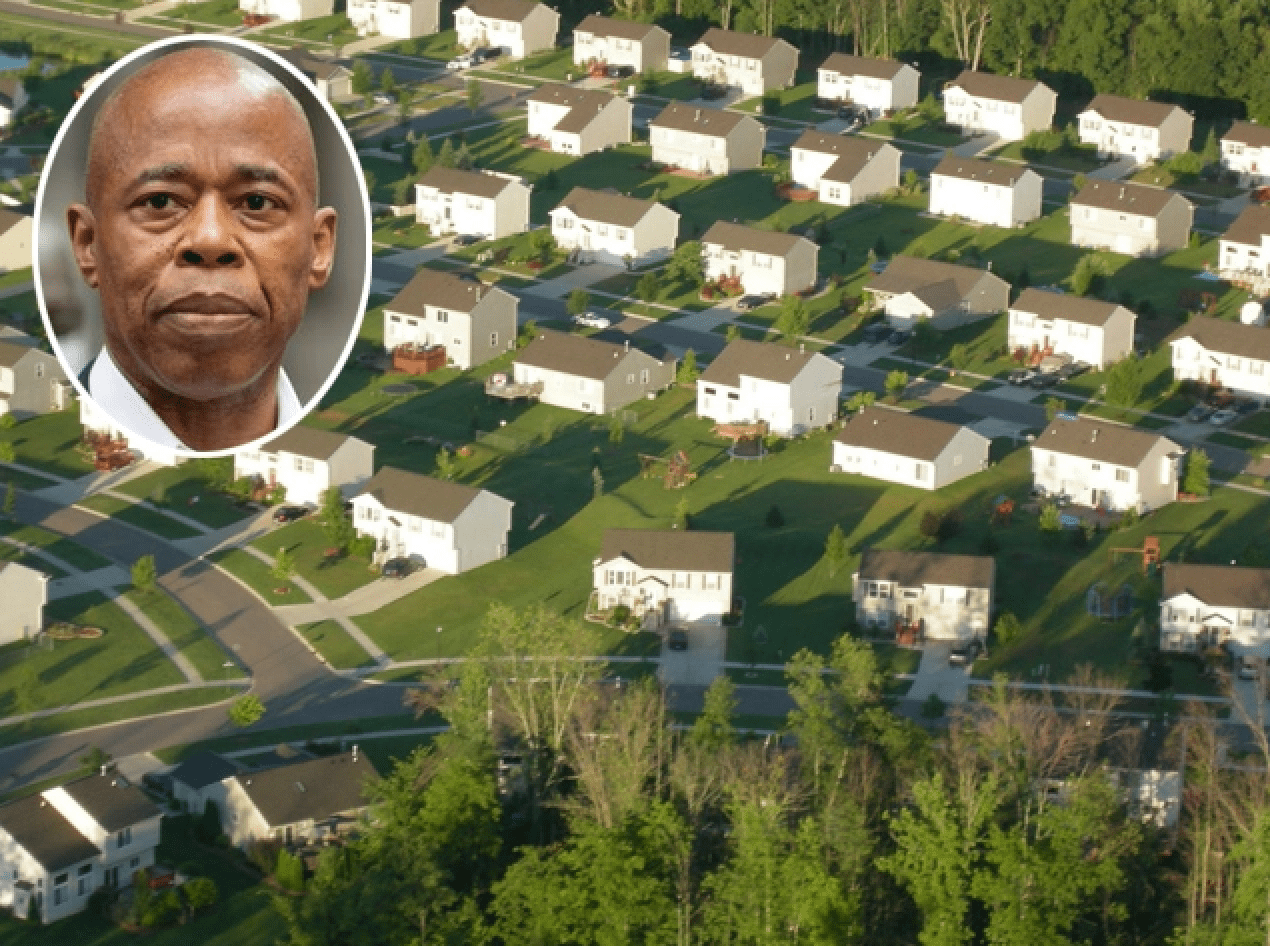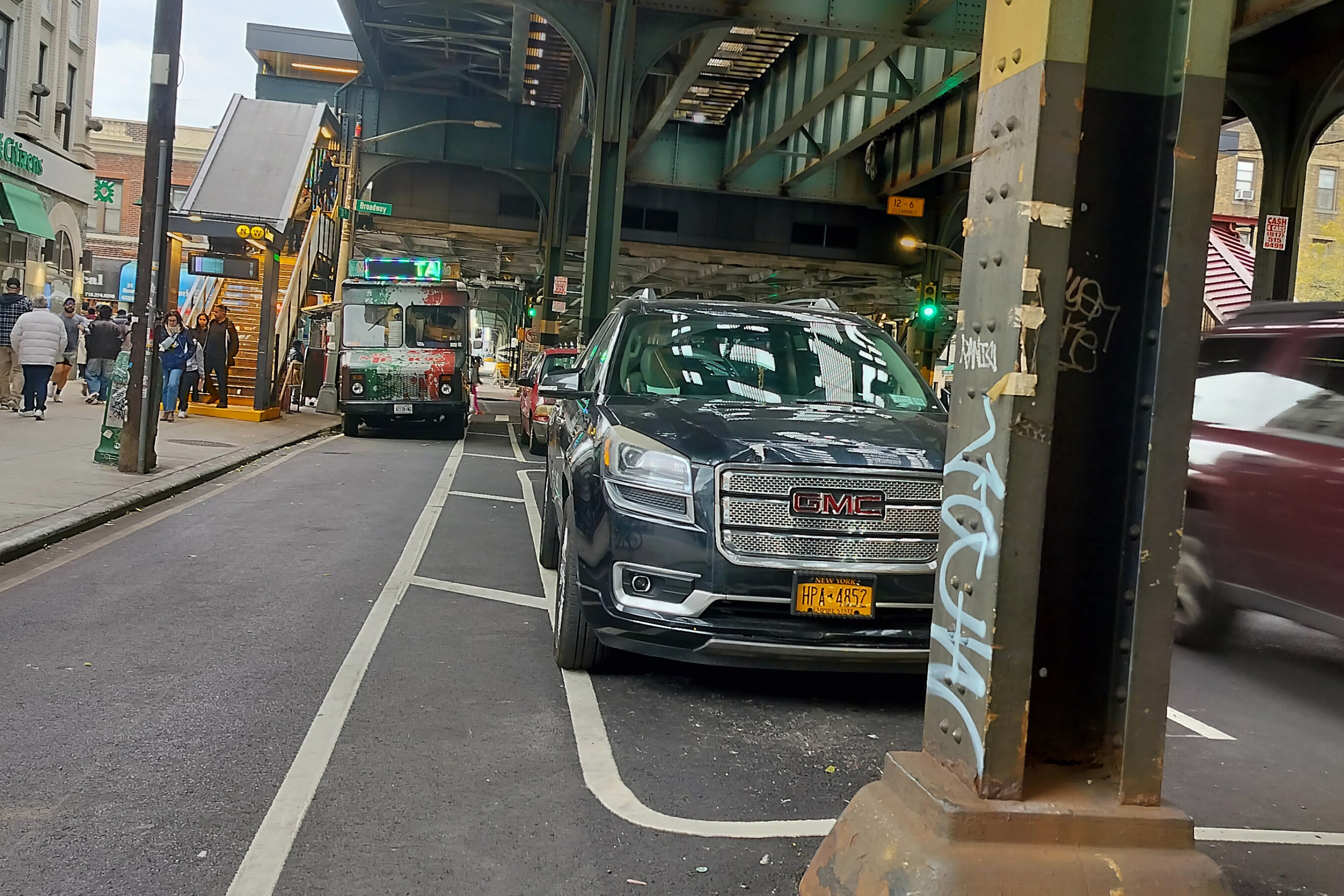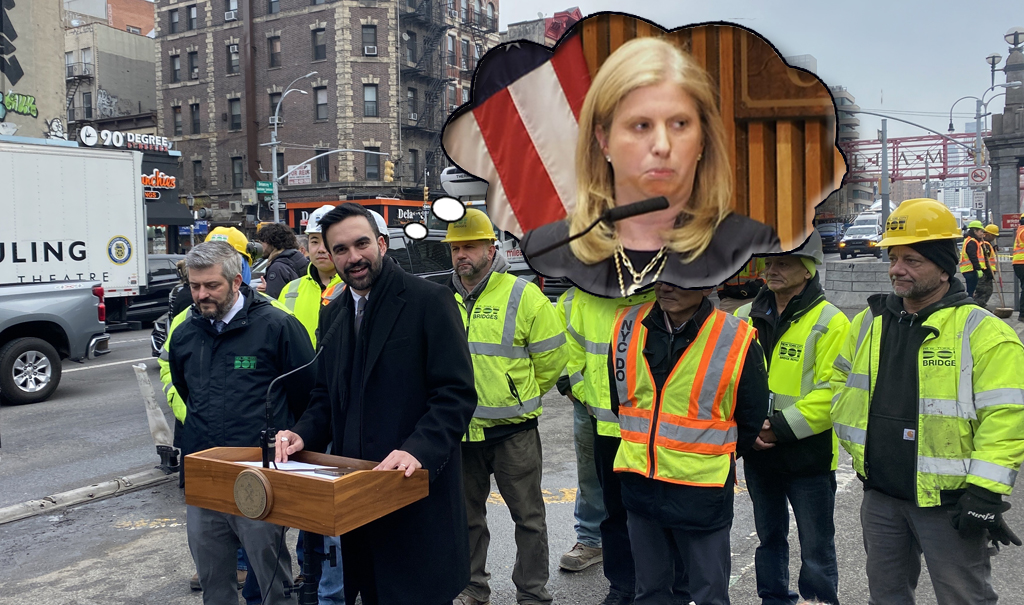If there is a car-owners vote in the New York City mayor’s race, Eric Adams appears to be winning it.
In the 50 ZIP codes with the highest rates of car ownership in the city, the Brooklyn borough president and mayoral hopeful has received more campaign contributions — in both dollars and individual donations — than any other Democrat, according to a Streetsblog analysis of campaign finance data and census estimates.
Adams received some 1,950 contributions totaling $670,000 through May 17 from donors in those 50 ZIP codes, where 69 percent to 95 percent of households have at least one car available. The neighborhoods are mostly in eastern Queens and Staten Island. The candidate with the next largest haul from them is Andrew Yang, who received around 1,500 contributions worth $181,000.
Adams’s fundraising in those neighborhoods far outpaces his overall contribution rate. Citywide, he has received 16 percent of individual contributions given to the eight leading Democratic candidates. But in those 50 car-dependent ZIPs, he has received 57 percent.
Adams has also received contributions at a disproportionately high rate from contributors who identified their employers as car manufacturers, car dealerships, oil companies, or other professions connected to driving.
Those contributions to the leading candidates — at least the ones Streetsblog found in a database search — amounted only to $113,000, a tiny fraction of the nearly $26 million in individual contributions received by the candidates through May 17. But Adams received 32 percent of them — a much larger portion than the 16 percent of donations he received overall.
Adams's strength among car-centric contributors and neighborhoods is consistent across the data, but it probably doesn't have much to do with his transportation platform, which isn't all that different from other leading candidates. Instead, Queens and Staten Island political leaders and safe streets advocates said Streetsblog's findings likely reflect the appeal of other aspects of Adams's campaign to more centrist voters in car-dependent outer-borough areas.
James Clinton, executive director of the Staten Island Democratic Party, said he was not surprised Adams’s law-and-order message is resonating with people in neighborhoods like Pleasant Plains, Eltingville, and Great Kills, where the candidate is winning the contribution battle.
“Out of all the mayoral candidates, it’s really Yang, Adams and [Kathryn] Garcia who are talking about public safety in a way that Staten Islanders can relate to,” Clinton said. “We’re made up of civil servants, whether it be cops, firemen, sanitation, etc. And those three candidates — Yang, Garcia, Adams — are really the ones who are speaking to those issues, or who have that background, at least in Adams’s case.”
Adams was previously a New York City police officer and a Republican. His campaign did not respond to interview requests for this story.
As for Adams’s strength in eastern Queens, John Albert, a Queens Democratic Party district leader in the area, said Adams has made it a point since early in his mayoral bid to reach out to voters there.
“Adams actually comes and campaigns out here,” he said. “That’s what makes him appealing.”
Both Albert and Clinton noted their communities are poorly served by mass transit.
On the street, several eastern Queens residents indeed said Adams's position on crime was a factor in their support.
"He believes that we really need to knock down our crime rate for our city to flourish," said Bill Isler of Glen Oaks, a registered Republican and driver who said he would likely vote for Adams in the general election in November. Isler cited subway crime as a particular concern in the neighborhood, which has no subway stops.
Concern about crime on the subway is so great for another Glen Oaks resident that she recently prohibited her husband from taking public transportation to work. Now he drives instead.
"Because of the high crime in the subway system, more people are driving now than doing anything else," said the woman, who gave only her first name, Nadine. She called all of the candidates "lousy," but said Adams was "better than the others."
The per-rider crime rate has gone up amid low ridership during the pandemic, but crime on the whole is down on the subway. And if Adams's public safety message is what's resonating with these voters, it's probably not because of soaring crime in their neighborhoods. Staten Island and northeastern Queens have some of the lowest crime rates in the city, NYPD data shows. (But, of course, perceptions of crime are hardly tethered to crime's actual threat.)
Adams's strength in those car-dependent neighborhoods also can't be easily explained by his strong support among voters of color. The 50 ZIP codes with the highest rates of car ownership in the city are slightly whiter (and wealthier) on average than the city as a whole, according to census estimates on race and ethnicity and median household income. Citywide, 32 percent of people are classified as White and not Hispanic or Latino, and the median income is about $64,000, per census estimates. In the neighborhoods in question, an estimated 38 percent of residents are White and not Hispanic or Latino, and the average median income is above $81,000.
Eric McClure, executive director of StreetsPAC, a political action committee that supports candidates that are pro-safe-streets and pro-mass-transit, said there is little daylight between Adams and most other leading candidates on transportation issues.
"His platform on streets and transportation is pretty progressive,” said McClure, who noted Adams’s pledge to build 300 miles of protected bike lanes and his calls for more busways. Adams also rides his bike every day, according to a 2018 City & State profile.
Still, Adams has at times sparked the ire of safe streets advocates, like when a spokesperson dismissed the rampant use of fake parking placards to park illegally in the city as a “New Paltz” problem, and when he refused to stop letting his staffers park their cars on the public plaza outside Brooklyn Borough Hall.
Contributions from the city’s least car-dependent neighborhoods were less uniform. Ray McGuire has raised by far the most in individual contribution money in those areas, which are mostly in Manhattan. But McGuire, a Wall Street executive, is also the only of the leading candidates that opted out of the city’s matching public funds program, which means his contributions aren't matched with city money, but he can accept larger individual contributions.
As measured by the number of individual contributions, Maya Wiley is in the lead in the least car-dependent neighborhoods, with 6,800, but Yang and Scott Stringer are close behind.
— with Henry Beers Shenk
METHODOLOGY
Streetsblog’s analysis is based on the following data sets:
- New York City Campaign Finance Board individual contributions
- U.S. Census Bureau 2015-2019 American Community Survey 5-Year estimates of cars available per occupied housing unit by ZIP Code Tabulation Area (“ZCTA”)
- U.S. Census Bureau 2015-2019 American Community Survey 5-Year estimates of median household income by ZCTA
- U.S. Census Bureau 2015-2019 American Community Survey 5-Year estimates of race and ethnicity by ZCTA
We relied on this Baruch College ZCTA-to-ZIP-code crosswalk to merge the contributions and census data sets. We excluded ZIP codes that are mostly in Nassau County, correspond solely to post offices or high-volume postal customers, or are in places with no households listed. That's why there are some blank spaces on the interactive map.






